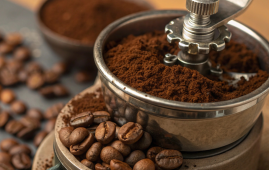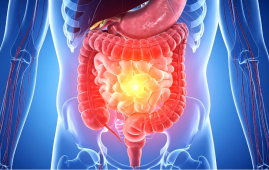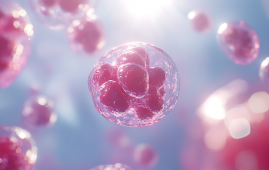

In a breakthrough led by Baylor College of Medicine, researchers have used Cell Painting technology to uncover plant-based flavonoids with the potential to treat bladder cancer. This innovative approach, which uses advanced microscopy and AI-driven analysis, allowed the team to screen hundreds of compounds and identify six with cancer-killing capabilities.
Cell Painting Enables Detailed Cellular Analysis
Cell Painting is a high-throughput imaging method that highlights cellular structures, helping scientists observe how individual cells respond to different compounds. With over 57,000 images per test plate, analyzing this data manually would be impossible. That’s where SPACe (Swift Phenotypic Analysis of Cells) comes in—a tool designed to handle this data using standard desktop computers.
Flavonoids Show Promise Against Bladder Cancer
Using SPACe, researchers screened 244 flavonoid compounds in bladder cancer cell lines. They identified six that killed cancer cells—two were already known (flavopiridol and rotenone), while four were novel candidates. These flavonoids work through different mechanisms, including damaging DNA or disrupting mitochondria—the energy hubs of the cell.
Notably, three flavonoids were found effective in 3D cancer models but didn’t harm normal bladder cells, highlighting their therapeutic promise.
Xanthohumol and the Beer Connection
Among the most interesting compounds was xanthohumol, a flavonoid present in certain beers. Researchers observed that it significantly reduced lipid metabolism in bladder cancer cells, leading to cell death. The team now wonders if regular consumption of xanthohumol-rich beer correlates with lower bladder cancer rates—a question for future epidemiological studies.
What’s Next in Flavonoid Cancer Research?
Future work will involve testing these promising flavonoids in animal models and eventually in clinical trials. The ultimate goal: to integrate safe, plant-derived compounds into modern cancer treatment strategies and improve outcomes for patients with bladder cancer.
Natural Compounds, High-Tech Tools, Big Impact
This study is a prime example of how Cell Painting and accessible computational tools can speed up the discovery of new therapies. By combining nature’s chemistry with state-of-the-art imaging and analysis, researchers are paving the way for safer, more targeted cancer treatments.
For more information: Bolt, M. J., et al. (2025). A phenotypic screen identifies xanthohumol and other flavonoids as killers of bladder cancer. Pharmacological Research – Natural Products. doi.org/10.1016/j.prenap.2025.100236.
more recommended stories
 How Soybean Oil Impacts Weight Gain and Metabolism
How Soybean Oil Impacts Weight Gain and MetabolismWhy Soybean Oil May Affect Metabolism.
 Coffee and Cognitive Function: Evidence Review
Coffee and Cognitive Function: Evidence ReviewA new narrative review in Cureus.
 Colorectal Cancer Screening Rates Low in Adults 45–49
Colorectal Cancer Screening Rates Low in Adults 45–49Recent UCLA research reveals that colorectal.
 Gut Immune Cells and Long-Lasting Antiviral Protection.
Gut Immune Cells and Long-Lasting Antiviral Protection.Breakthrough Findings on How Gut Immune.
 Mild Pancreatic Duct Dilatation Signals Higher Cancer Risk
Mild Pancreatic Duct Dilatation Signals Higher Cancer RiskEarly Structural Changes Offer Critical Clues.
 How the Uterus Senses Force During Labor: New Insights
How the Uterus Senses Force During Labor: New InsightsA new study published in Science.
 Fat-Free Mass and Brain Outcomes in Preterm Babies
Fat-Free Mass and Brain Outcomes in Preterm BabiesEarly Fat-Free Mass May Hold the.
 How Hormones Shape Dopamine-Driven Learning
How Hormones Shape Dopamine-Driven LearningNYU Study on Hormones and Cognitive.
 Protein Pair Guides Chromosome Alignment in Mitosis
Protein Pair Guides Chromosome Alignment in MitosisKey Points A joint research team.
 Intensive mind-body retreat rapidly alters brain function
Intensive mind-body retreat rapidly alters brain functionAn intensive mind-body retreat combining meditation,.

Leave a Comment